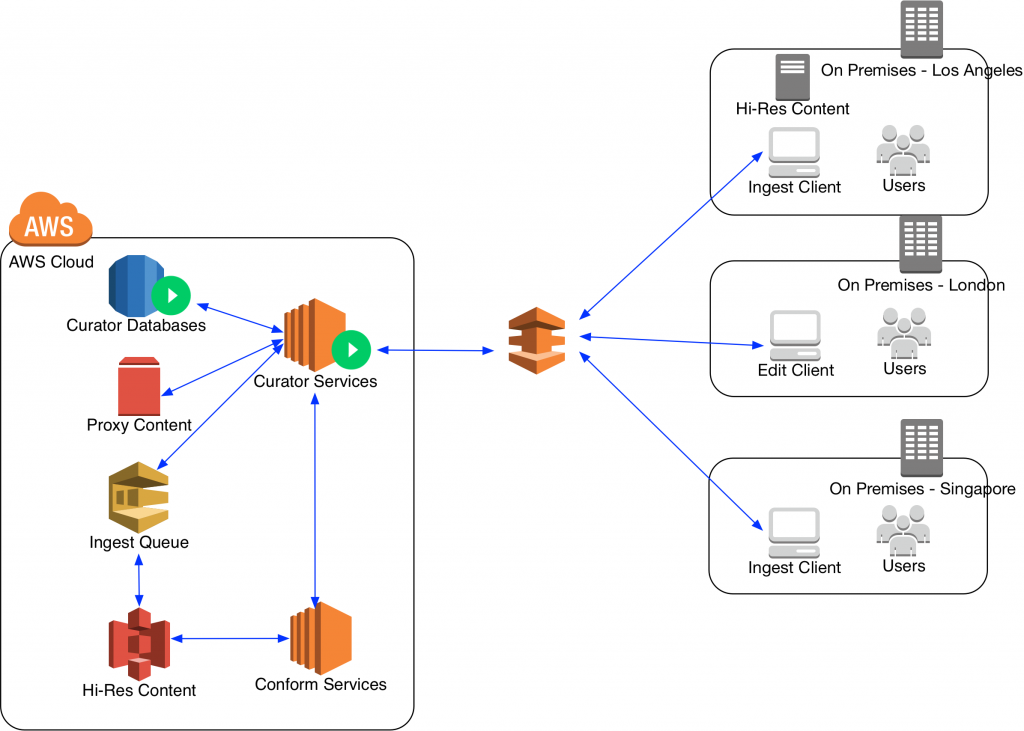AWS for M&E Blog
Category: How-To
Create a poster frame and thumbnail images for videos using AWS Elemental MediaConvert
If you develop video applications, you probably need to create poster frames (a highlight image that is representative of a video) and thumbnail images (periodic frame grabs over the duration of the entire video) as a part of your workflow. Have you ever wondered how to create a poster frame for a specific frame in […]
Build an automatic alert system to easily moderate content at scale with Amazon Rekognition Video
Introduction There has been a steep increase in people creating videos, spending time watching videos, and sharing videos. Most of the videos created today are user-generated content, but publishing this raw content comes with risk. To help ensure a positive website experience for customers by removing inappropriate or unwanted content, companies need a scalable content […]
New from the Compute Blog: Building a GPU workstation for visual effects with AWS
The elasticity, scalability, and cost effectiveness of the cloud value proposition is attractive to media customers. One of the key design patterns in media and entertainment (M&E) workloads is using the cloud as a content lake and bringing the underlying processes closer without having to synchronize data. In this high-end graphics visualization business, a pixel-perfect, […]
Working with AWS Elemental MediaTailor logs and metrics
AWS Elemental MediaTailor is a content personalization and monetization service that allows customers to implement stitched server-side ad insertion for streaming video while maintaining high quality of service. It uses dynamic transcoding to reduce storage requirements and ensure that video seamlessly transitions between advertising and primary content during playback. AWS Elemental MediaTailor manipulates the HTTP Live […]
Hybrid cloud editing with IPV curator and AWS
Guest post by Mark Stephens (Partner Solutions Architect, AWS Partner Program), James Varndell (Product Manager, IPV), and Rebecca Lindley (Product Marketing Associate, IPV). There’s no doubt that modern video content production workflows can be incredibly complicated. From storing a growing library of media, to managing projects with editors in different locations, to the demand for turning content […]
How to migrate workflows from Amazon Elastic Transcoder to AWS Elemental MediaConvert
Introduction At re:Invent 2017, AWS Elemental released five new media processing and delivery services. One of these services, AWS Elemental MediaConvert, shares functionality with another file-based video transcoding service on AWS, Amazon Elastic Transcoder. Today, we detail the primary differences between these two services. If you are using Amazon Elastic Transcoder and are ready to migrate […]
Part 4: How to compete with broadcast latency using current adaptive bitrate technologies
Part 1: Defining and Measuring Latency Part 2: Recommended Optimizations for Encoding, Packaging, and CDN Delivery Part 3: Recommended Optimizations for Video Players Part 4: Reference Architectures and Tests Results (this post) Part 4: Reference Architectures and Tests Results In previous installments of this blog series, we explored the options for optimizing latency across the […]
Deploying a 4x4K, GPU-backed Linux desktop instance on AWS | AWS Compute Blog
Check out this post on our Compute Blog which is great for creators doing VFX and Rendering workloads on AWS: Deploying a 4x4K, GPU-backed Linux desktop instance on AWS | AWS Compute Blog
Transferring asset files, caching, and storage-to-render on AWS
INTRODUCTION One of the many goals of Deadline 10 is to ensure that customers can render on AWS as easily as possible. An essential part of moving to a hybrid or fully AWS-based rendering workflow is dealing with transferring asset files to AWS, and downloading resulting renders from AWS. Fortunately, customers can accomplish this job […]
Part 3: How to compete with broadcast latency using current adaptive bitrate technologies
Part 1: Defining and Measuring Latency Part 2: Recommended Optimizations for Encoding, Packaging, and CDN Delivery Part 3: Recommended Optimizations for Video Players (this post) Part 4: Reference Architectures and Tests Results Part 3: Recommended Optimizations for Video Players In previous installments of this blogs series, we looked at the possible optimizations that can be applied […]









